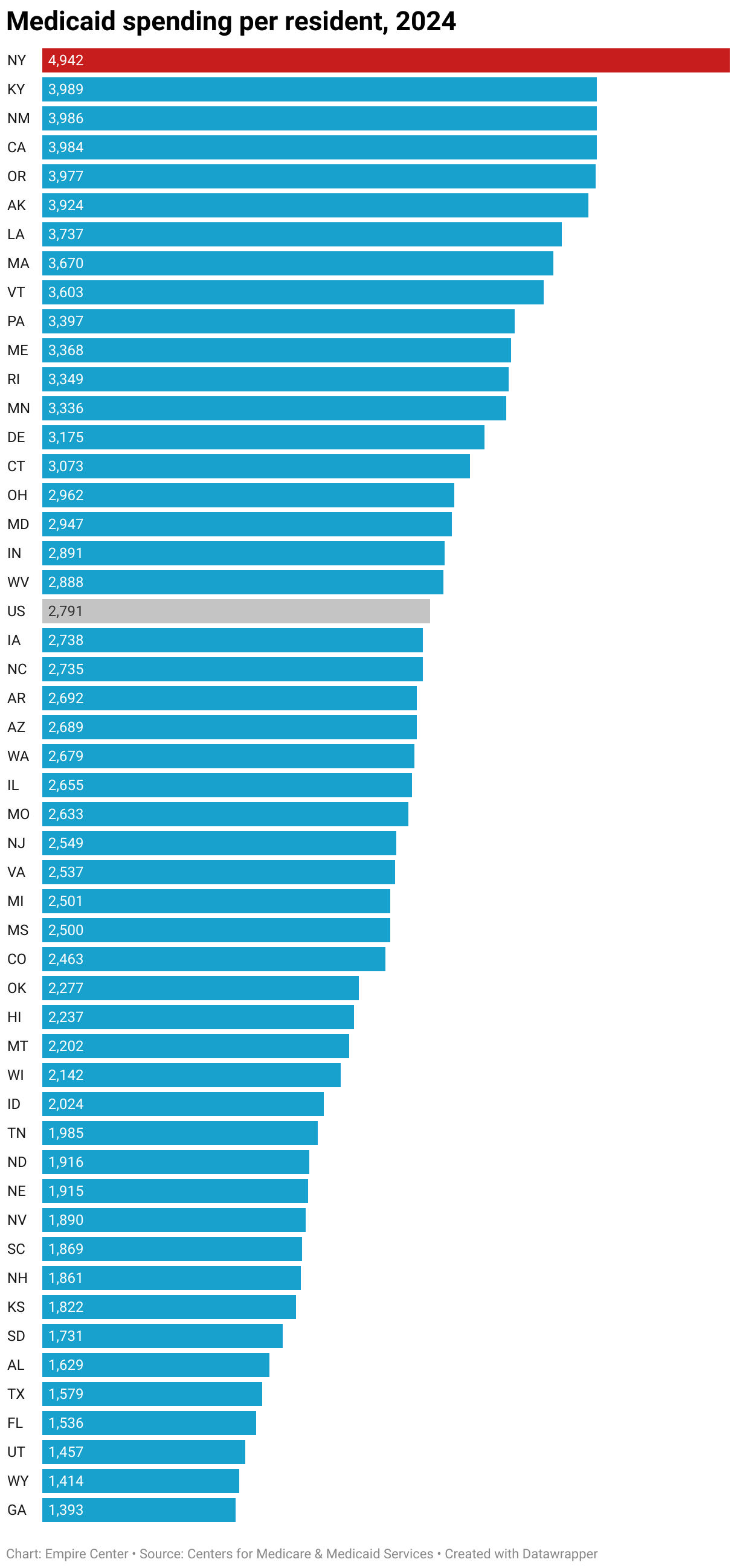New York’s Medicaid program remained a spending outlier in 2024, with per-resident outlays that were 24 percent higher than those of any other state and 77 percent above the national average, according to a federal report released on Thursday.
The report provides timely context for the current discussion about how state leaders should respond to looming cutbacks in federal health funding. Its data suggest that New York has the capacity to absorb billions of dollars in reduced federal aid while continuing to operate a generous and well-funded Medicaid program by national standards.
Medicaid is a safety-net health plan for the low-income and disabled that is jointly financed by the federal government and the states. Friday’s report from the Centers for Medicare & Medicaid Services summarizes almost $1 trillion in nationwide spending on the program for the fiscal year ending in September 2024.
Although New York represents less than 6 percent of the U.S. population, its $98 billion Medicaid budget accounted for more than 10 percent of national spending on the program.
New York’s Medicaid spending per resident, at $4,492, was by far the highest among the 50 states. The second-highest state was Kentucky at $3,989 per resident, and the national average was $2,791 per resident.

New York’s No. 1 status reflects a combination of factors, including above-average enrollment (currently 35 percent of the population, including 47 percent of New York City residents), a broad array of covered benefits and relatively high payments to providers.
New York also operates the Essential Plan, an optional benefit under the Affordable Care Act that was exercised by only two other states, Minnesota and Oregon. New York’s version is offered to people with incomes above the cut-off for Medicaid, from 138 percent to 250 percent of the poverty level, and covers 1.7 million enrollees, or 9 percent of the population.
The federal government currently foots the bill for the Essential Plan’s entire $13.7 billion budget, an amount not included in Friday’s report.
Recently enacted federal budget legislation – known as the One Big Beautiful Bill Act – would scale back federal funding for both Medicaid and the Essential Plan. State officials have estimated that the changes will ultimately displace 1.5 million New Yorkers from coverage and cost the state $13 billion in lost revenue or added expenses.
In the shorter term, the Budget Division has put the direct cost to the state health budget at $3 billion to $4 billion annually.
Significant as those amounts are, they are still smaller than the spending gaps between New York and neighboring states as documented in Thursday’s CMS report.
If, for example, New York lowered its per-resident outlays to match the No. 2 state, Kentucky, its overall Medicaid spending would be $19 billion less and the state government’s share of those savings would be about $8 billion.
If New York matched the spending rate of Massachusetts, its total Medicaid savings would be $25 billion and the state-share savings would be $11 billion.
And if New York matched the per-resident rate of New Jersey, the total savings would be $48 billion and the state-share savings would be $20 billion.












